

Shane O'Donoghue
2025 Nissan Ariya Nismo review: Quick drive
6 Days Ago
'Scout' was an American nameplate now owned by Volkswagen, which is planning to use it on future electric SUVs and pickups.

Contributor
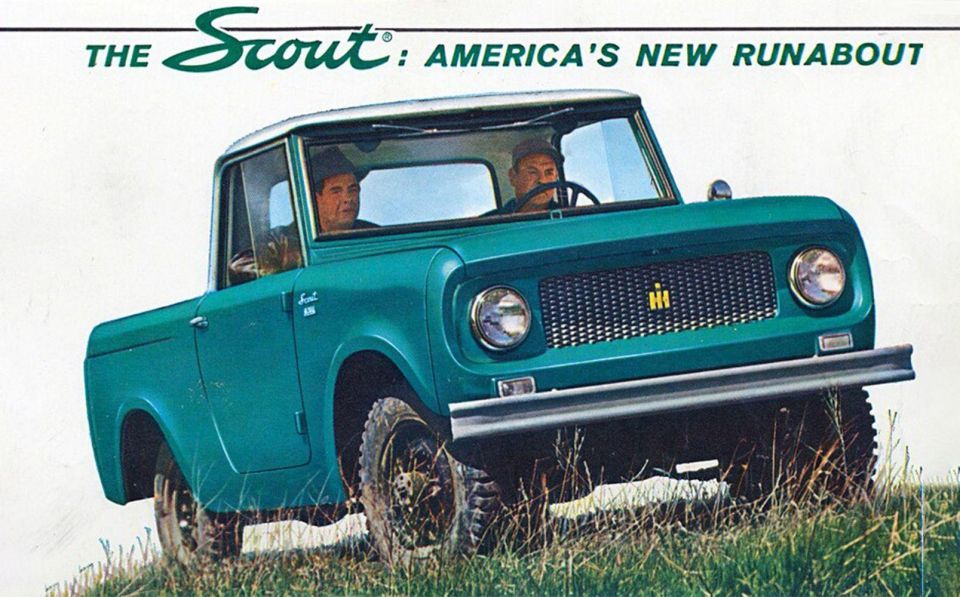

Contributor
The word ‘scout’ has many connotations. Apart from the dictionary definition of someone being sent ahead of a group to search for something or to gather information, it carries implications of being the first to do something, or innovating and breaking new ground.
It is perhaps for these reasons that the Volkswagen Group’s Skoda brand has recently used the ‘Scout’ moniker to brand higher-riding, rough-road ready versions of its Octavia and Superb wagons.
But more recently, the Volkswagen Group said it would go further: making the Scout nomenclature a brand in its own right.
The Volkswagen Group says that the Scout brand will consist of a range of electric, off-road ready 4×4 vehicles that are designed and developed in America, primarily for the American market.
How did this come to be, and is there any Australian link?
MORE: Scout, a new VW brand launching electric ute in 2026 MORE: Volkswagen introducing Scout as rugged EV brand – report
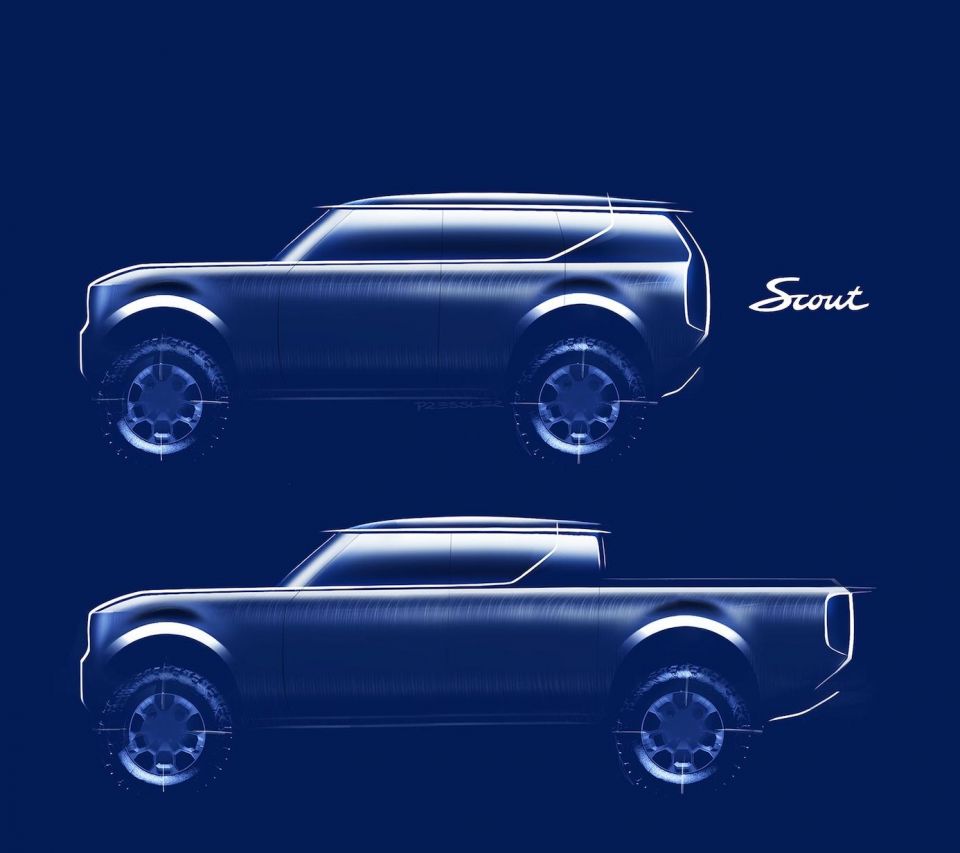
The Scout nameplate is intimately tied with the International Harvester (IH) brand.
An American manufacturer of agricultural and commercial equipment, International Harvester was founded in 1902 following a merger of several other companies.
As implied by its name, the company specialised in the production of various agricultural and farming equipment, including reapers and mowers, and shortly afterwards began producing combustion-engined machinery such as tractors.
Global expansion followed shortly thereafter, and in Australia the company got around our protectionist import tariffs by opening factories in Geelong (1937), Dandenong (1952) and Port Melbourne (1958) to produce everything from trucks to earth-moving and construction equipment.
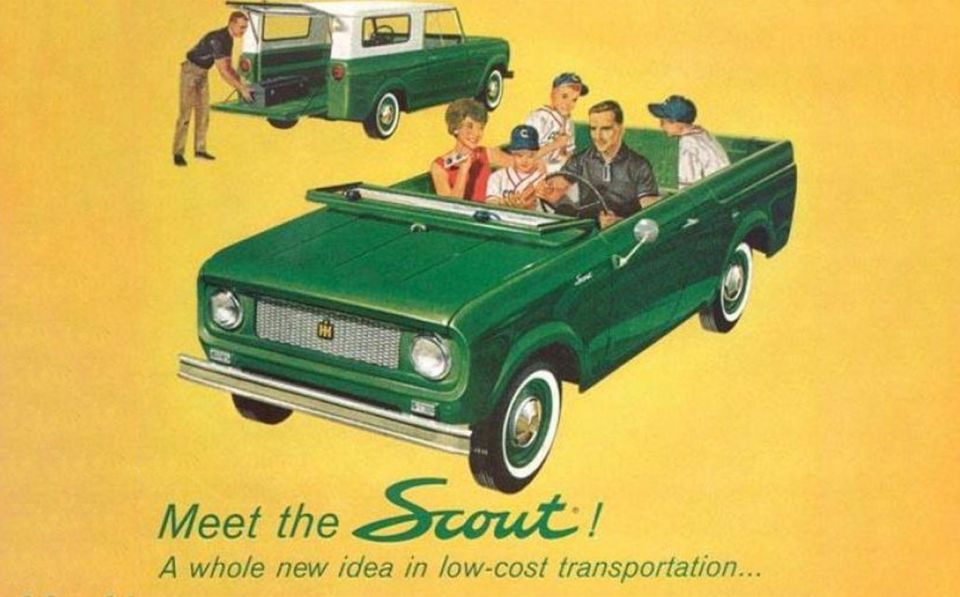
Dominating the agricultural and farm equipment markets, International Harvester sought to diversify its product lineup further during the mid-20th century.
The company had noticed that the Willys Jeep, used to great success by Allied forces during WWII, was now being used as a dual purpose vehicle, equally adept at recreational off-roading as it was carrying supplies and equipment over muddy tracks and rough terrain.
Responding to this, it sought to create a more refined competitor, and came out with the Scout (also known as the Scout 80) in late 1960, as an MY61 model.
On sale after just 24 months of development, which included compromises such as substituting the original fibreglass body for a cheaper but heavier steel replacement, the original Scout was powered by a 2.5-litre four cylinder engine developing just 69kW of power.
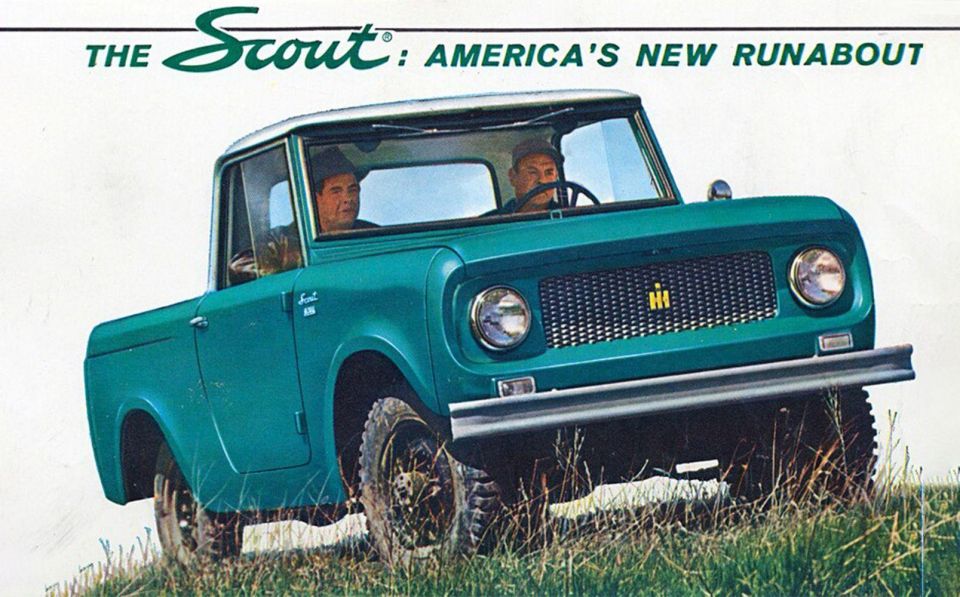
At the time, IH only made larger six- and eight-cylinder engines, and so the four-cylinder was simply its eight-cylinder petrol engine with a bank of cylinders removed. An improved Scout 800 was launched in 1965, with additional convenience features such as electric wipers, but more importantly a broader engine choice including six and eight cylinder engines.
The second generation Scout II followed on from 1971, and it was this model that brought the Scout nameplate into its own.
Moving away from the rugged, Jeep rivalling image of the original, the Scout II featured more contoured styling and a more refined, upmarket image that was to be a spiritual predecessor to the modern SUV, and inspire a range of direct competitors including the Ford Bronco.
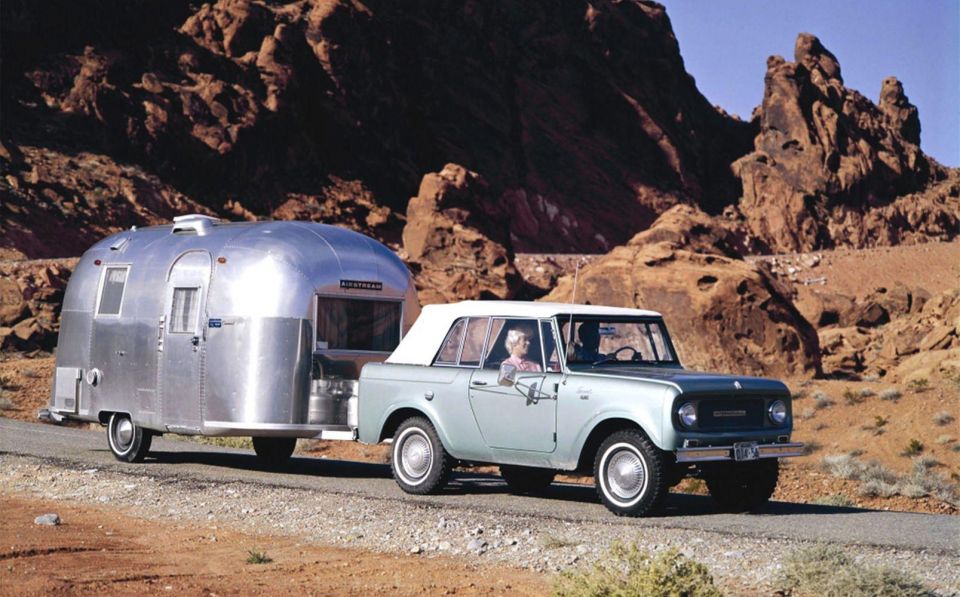
Perhaps one notable feature across both generations of the Scout were the wide variety of bodystyles on offer, despite no model of Scout featuring rear doors.
For the first generation Scout, purchasers could choose between full-length metal or vinyl roofs. For those looking to use their Scouts to carry equipment, half-length Ute style ‘cab-tops’, also in metal and vinyl, were also available. The vinyl roof was removable, giving customers an open-air convertible 4×4 experience, perfect for recreational driving.
The second generation featured similar bodystyles, with the full-length metal roof Traveltop variants now featuring a distinctive upwards ‘kick’ to the rear window line with an elongated rear window.
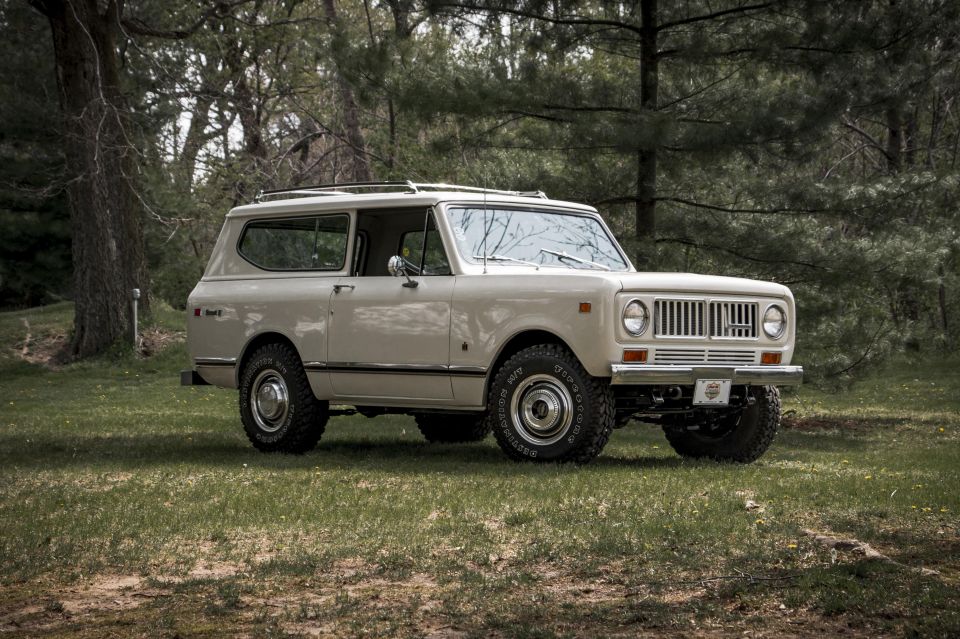
On top of the body styles carried over from the first generation, the Scout II also featured two extended length variants, namely the Scout Terra and Traveler. These had additional rear seat space by increasing the wheelbase by 46 cm.
The Terra utilised a half-cab fibreglass top, resembling a Ute, whilst the Traveler had a full-length top, also made from fibreglass, but paired with a hatchback style rear tailgate.
In Australia, both generations of the Scout were sold, but the model gained slightly more traction in 1976 following the introduction of the Terra and Traveler editions. Nevertheless, actual build quality and reliability remained below newly introduced Japanese rivals at the time from Toyota and Nissan.
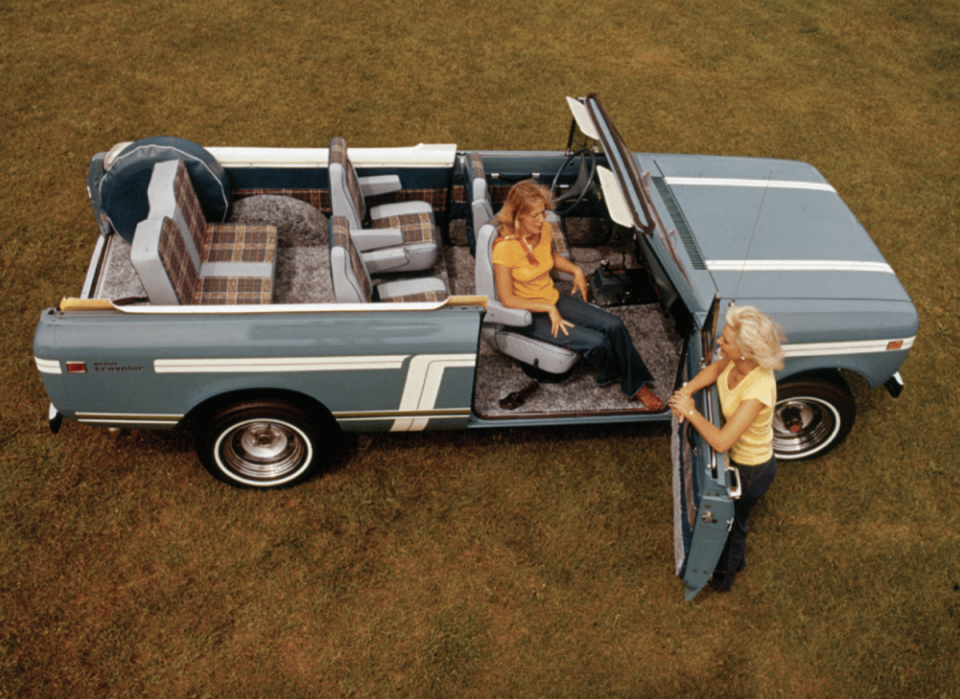
In 1981, the Scout’s last year on sale in Australia, Traveltop and Traveller variants were available, both of which were equipped with a 5.6-litre eight-cylinder engine, and priced from $14,675 and $15,440 respectively (approximately $63,973 and $67,308 in 2022 dollars).
With parent company International Harvester facing numerous financial difficulties, the Scout lineup was discontinued globally in 1980.
The Volkswagen connection stems from a series of decisions that led to the break-up and demise of the faltering International Harvester parent company during the 1980s.
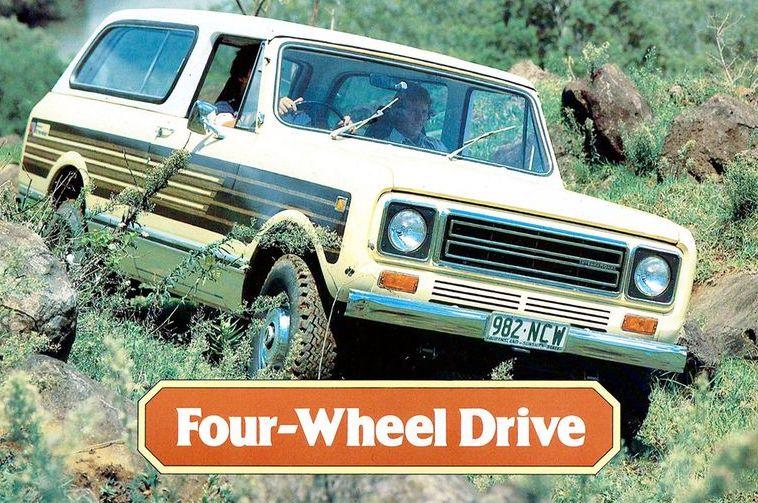
Although the Scout lineup, on its own, was reasonably successful, especially in its home market of America, parent company International Harvester had spread itself too thin, in developing a range of 4×4 and passenger vehicles alongside its traditional strengths of commercial machinery, agricultural equipment and trucks.
Business consolidation and streamlining took place as a consequence, all of which was corporate speak for selling off IH’s construction and agricultural equipment divisions, and instead focusing on commercial vehicles.
Now rebranded to Navistar International because of a due diligence failure which meant that the intellectual property of the International Harvester brand resided within the already sold equipment division, engine and truck production continued for the next two decades.
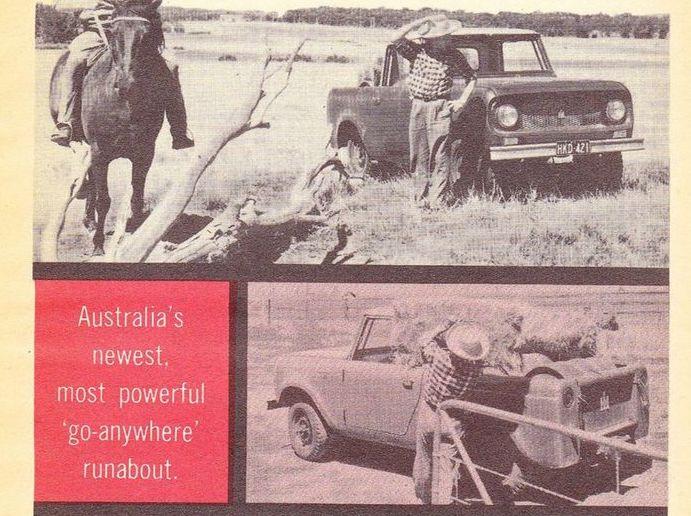
However, with the American EPA releasing tightened emissions regulations for diesel commercial vehicles in the early 2000s, Navistar hedged its bets on exhaust gas recirculation (EGR) technology. The company believed that diesel engines equipped with this technology by itself (as opposed to being implemented alongside other technologies such as selective catalytic reduction/urea injection) could meet EPA emissions.
Unfortunately, this was a fatal error. The company failed to meet regulations, suffered numerous fines and lawsuits, and as a result was subject to a takeover by Traton SE, the Volkswagen Group’s commercial vehicles subsidiary. Initially purchasing a 16.6 percent stake in 2017, a full acquisition was completed by 2021.
In turn, this purchase gave the Volkswagen Group rights to the Scout brand.

Apart from confirming that Scout will form an independent brand within the Volkswagen Group, the company has released concept sketches for two potential models, and has forecast annual sales of up to 250,000 Scout branded models, with initial production to commence in 2026 in the USA.
Volkswagen is rumoured to be making an initial $US100 million investment to form the new brand.
The two models previewed consist of an SUV and a ute-style pick-up, both with the distinctive upwards kick of the rear window that featured on certain variants of the Scout II.
Volkswagen has additionally confirmed that these models will use a dedicated 4×4 EV platform, meaning that it is unlikely they will be based on the same MEB underpinnings shared by the current VW ID. 3 and ID. 4, amongst other models.
MORE: Scout, a new VW brand launching electric ute in 2026 MORE: Volkswagen introducing Scout as rugged EV brand – report
Where expert car reviews meet expert car buying – CarExpert gives you trusted advice, personalised service and real savings on your next new car.


Shane O'Donoghue
6 Days Ago


Anthony Crawford
5 Days Ago


Matt Campbell
4 Days Ago


James Wong
3 Days Ago


Max Davies
1 Day Ago


Josh Nevett
6 Hours Ago